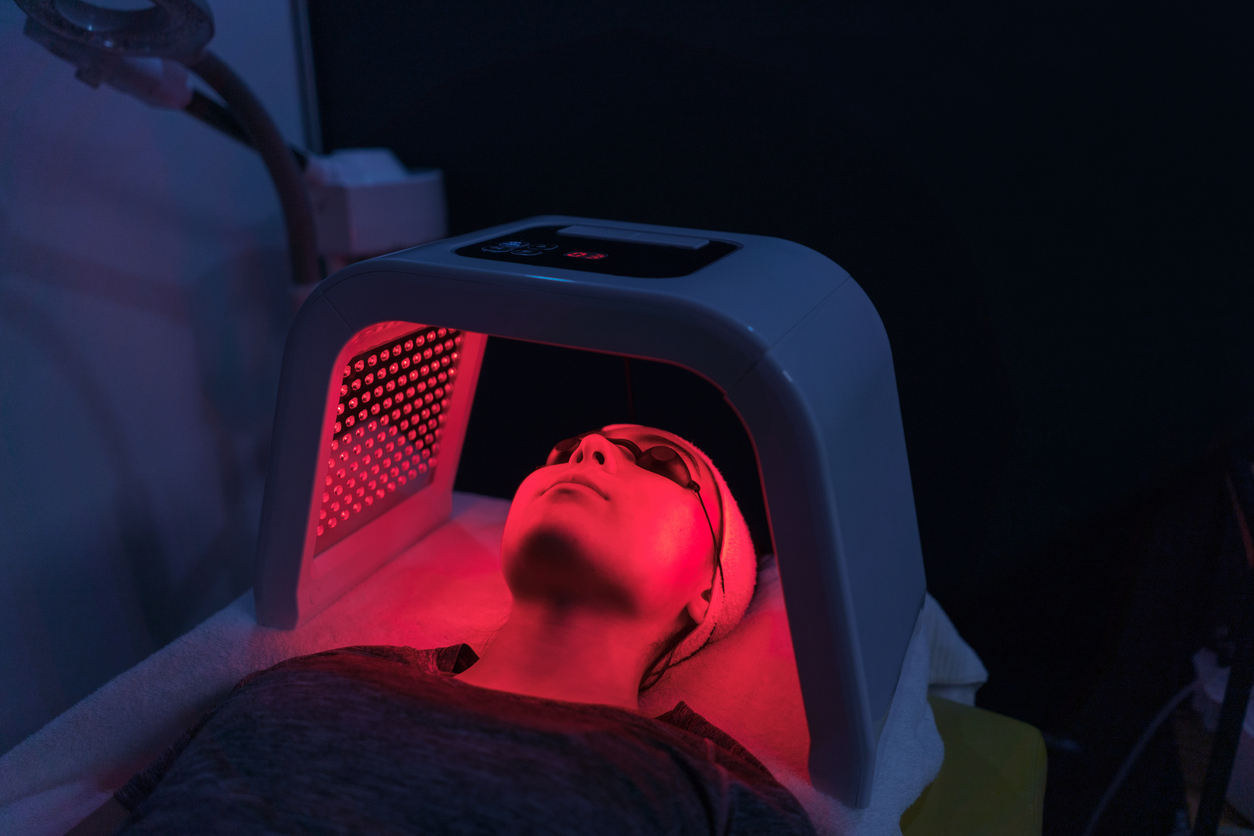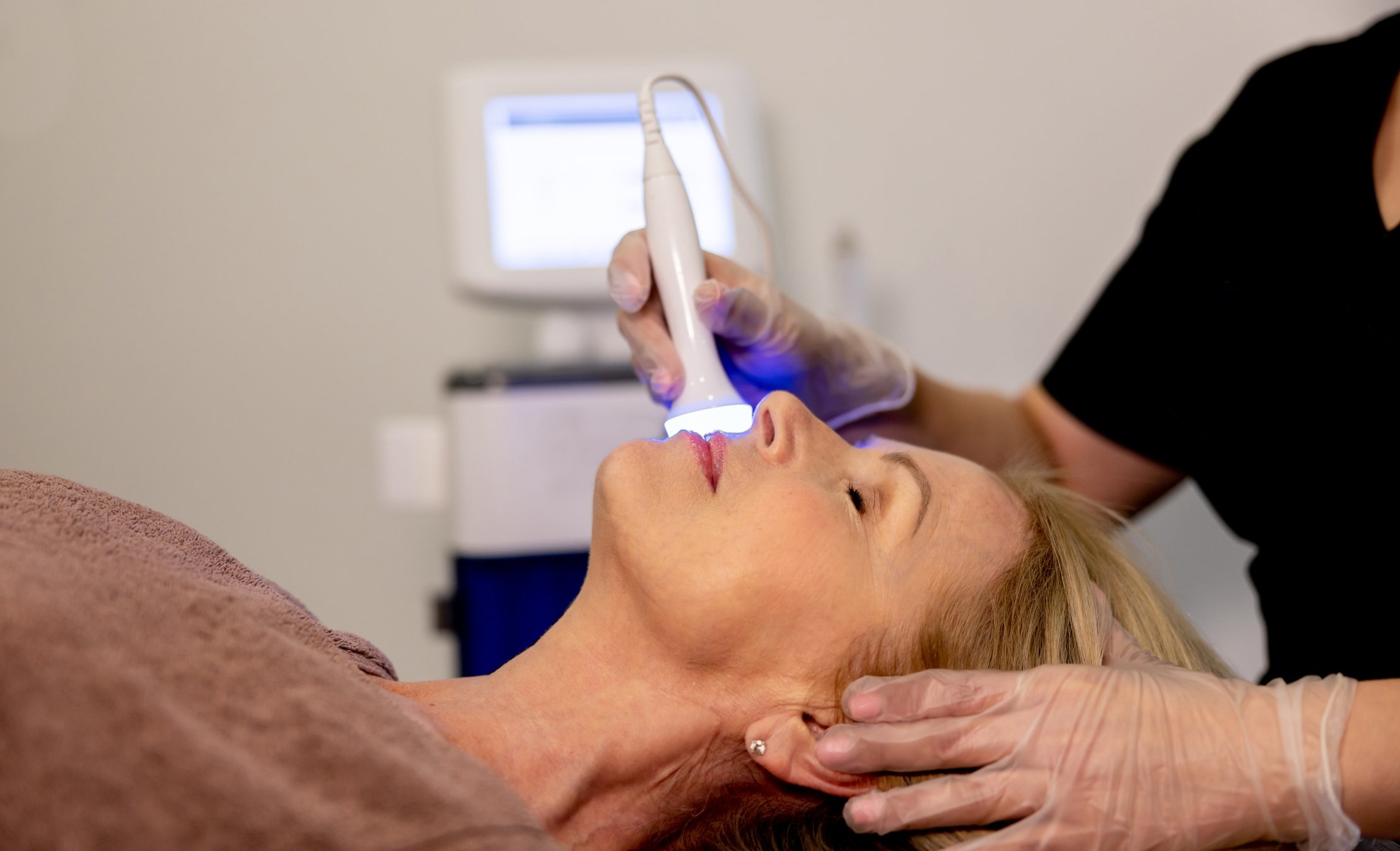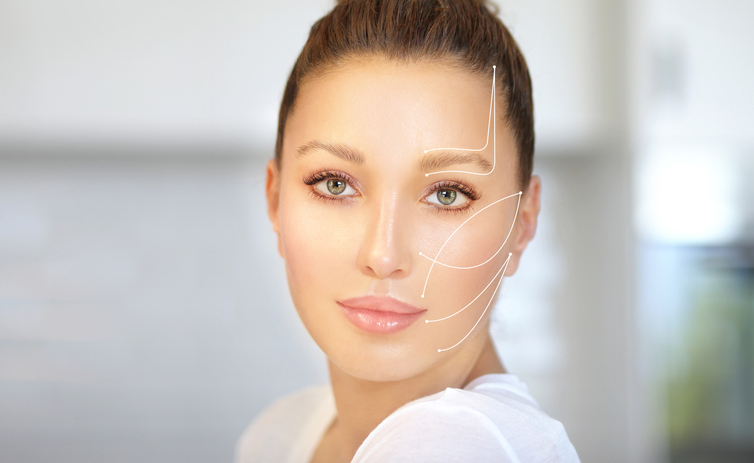If you’re looking for a non-invasive treatment that can produce dramatic results for concerns like…
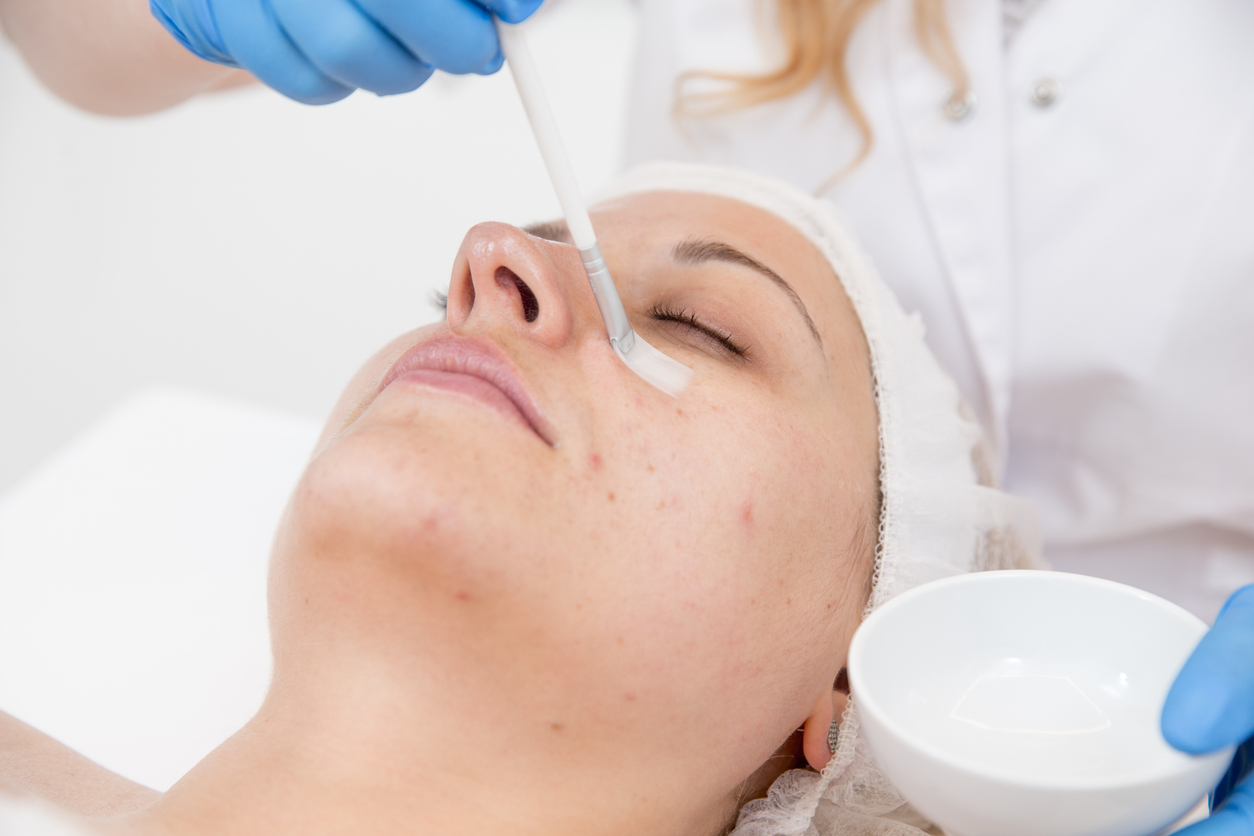
Chemical Peel Benefits: How You Can Transform Your Skin
Looking for a way to rejuvenate dull skin? How about a non-invasive treatment that can reduce the look of discoloration, fine lines, wrinkles, or acne scars? Chemical peels can do all of this and more.
Read below to learn more about chemical peels. We will explain the types of peels available, their benefits, and what to expect before, during, and after your treatment.
What is a Chemical Peel?
A chemical peel is a cosmetic procedure in which an aesthetic practitioner applies a chemical solution to the skin to cause controlled exfoliation. This process loosens and removes dead skin cells while stimulating the growth of new, healthier skin cells.
Chemical peels have a range of benefits. Among the most important is that they’re highly customizable. You can choose different formulations and get peels that vary in strength and depth depending on the skin concerns you’d like to address.
Understanding Different Types of Chemical Peels
Chemical peels come in different formulations and different “levels.” For example, here at Vargas, one formulation we use is the PCA Peel with Hydroquinone & Resorcinol. This is an excellent option for someone who requires a deep treatment. Conversely, if you have sensitive skin or want a lighter peel, the Sensi Peel formulation, a gentle formula, maybe the ideal choice.
We offer many more formulations beyond those two. To choose the correct formulation, we’ll need to discuss your skin concerns and discover what level of treatment is appropriate for you.
When it comes to levels, most chemical peels are broadly categorized into the following three depths:
- Superficial chemical peels are also known as light chemical peels. These treatments often use mild acids like alpha-hydroxy acids (AHAs) to exfoliate the outermost layer of the skin gently. They’re ideal for treating fine lines, mild acne, uneven skin tone, and dryness.
- Medium peels typically use stronger acids like trichloroacetic acid (TCA). They penetrate into the middle layers of the skin. These chemical peels are good for acne scars and can treat wrinkles and uneven pigmentation.
- Deep peels often use potent acids like phenol to penetrate the skin deeply. This type of peel can address more severe wrinkles and scars. However, they’re also more intense, so you’ll need a more extended recovery period afterward.
Choosing from among these types of chemical peels will depend on your specific concerns and your aesthetic goals. During a consultation, we can help guide you toward the ideal choice for your unique needs.
Chemical Peel Benefits: Why You Should Consider a Peel
Chemical peels offer a multitude of benefits. It’s why they’re such a popular choice for skin rejuvenation. Here’s what you can get from these treatments:
- Exfoliation and skin renewal: Chemical peels help your skin shed dead skin cells to reveal the fresh, healthy skin below. They also promote cell turnover, which helps to achieve a healthy glow.
- Improved skin texture and tone: Chemical peels can smooth rough patches and fade dark spots, pigmentation, and sun damage, resulting in a brighter, more even complexion.
- Reduction in the look of fine lines and wrinkles: Chemical peels stimulate collagen production, which boosts skin elasticity and firmness. This helps diminish the appearance of fine lines and wrinkles.
- Treatment of acne: Chemical peels unclog pores, reduce blackheads, and minimize acne breakouts.
- Reduction of acne scars: By promoting new skin growth, chemical peels also help improve the appearance of acne scars.
What You Can Expect Before, During, and After a Chemical Peel
Chemical peel before and after images make everything look easy—but before you schedule a chemical peel, you should look past the photos to discover what the process entails. Understanding what to expect will help you set realistic expectations and enjoy a successful experience that delivers the desired results.
Here’s what you can expect before a chemical peel session:
- You’ll need to schedule an initial consultation with your provider so that you can discuss your concerns and choose the appropriate formulation for your needs.
- To reduce the risk of irritation, you may be asked to stop using certain skincare products, like retinoids, a few days before the peel.
The procedure itself is relatively simple. Your provider will apply the peel solution to your skin. You may feel mild tenderness, burning, or stinging. After the solution is left on for a specific amount of time, your provider will remove it, apply any topical products that may be needed, and advise you on post-treatment care. Sessions usually take between half an hour to an hour.
After your peel, you can expect the following:
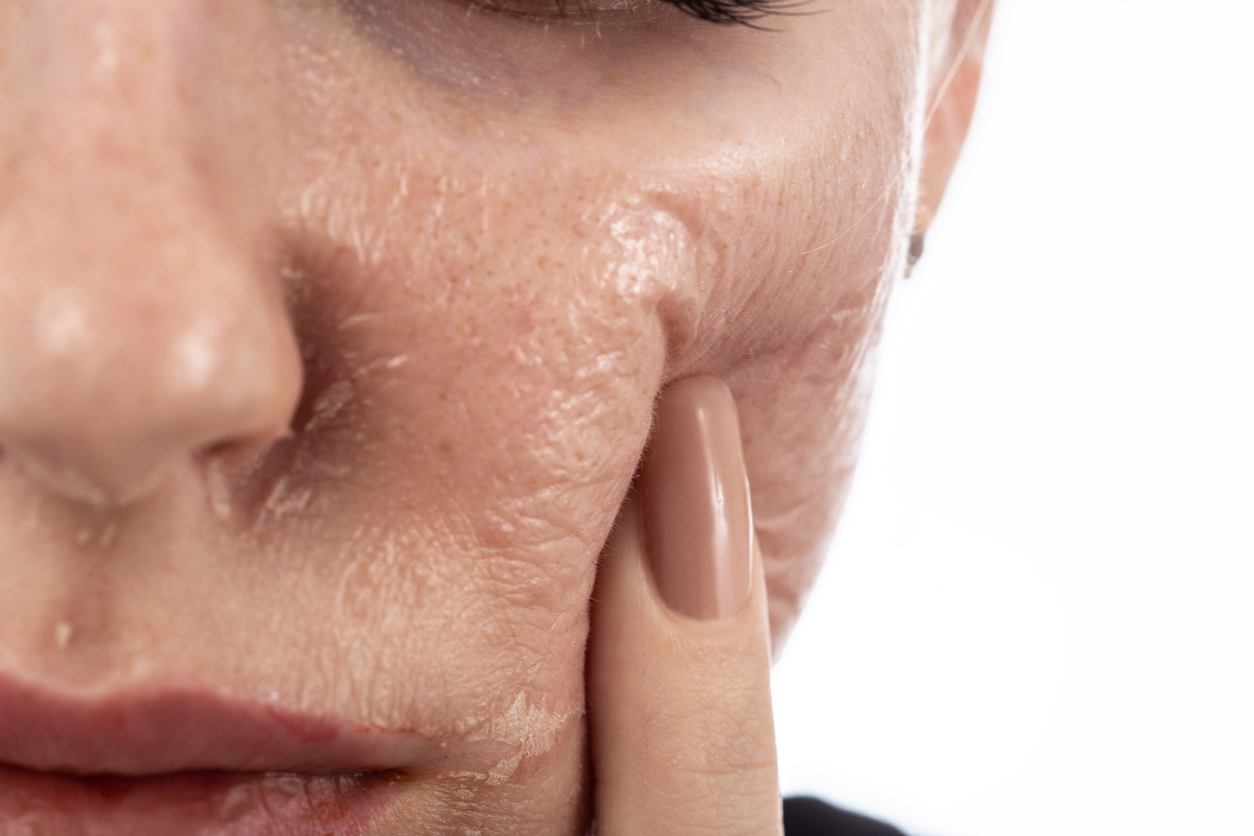
- In the immediate aftermath of the peel, your skin may appear red and feel tight.
- Peeling and flaking may begin within a few days, depending on the strength of your peel.
- You’ll need some time to heal, but this depends on the depth of the peel. Superficial peels typically have minimal downtime, while deep peels require a more extended healing.
- As your skin heals, you can expect a brighter, smoother complexion. Depending on the depth of the peel, you may also notice improvements in fine lines, wrinkles, and scars.
Chemical Peel Recovery Tips
Proper aftercare is essential to maximize the benefits of a chemical peel. Here’s what you should do to make recovery proceed smoothly:
- In the first few weeks after a chemical peel, it’s best to stay out of the sun. The winter months are the best time for many to schedule their peels since cold weather means it’s more likely that you’ll be staying indoors.
- If you do need to go outside, remember that your skin will be more sensitive to sunlight. Use a broad-spectrum sunscreen and avoid direct sun exposure.
- Stay hydrated by drinking plenty of water and using a good moisturizer. This will help alleviate dryness and support the healing process.
- Use mild, non-irritating cleansers and avoid harsh active ingredients or exfoliants in your skincare routine until your skin has fully healed.
- Resist the urge to pick or peel off flaking skin, which can lead to scarring or infection.
Find the Right Chemical Peel at the Vargas Face & Skin Center
A chemical peel has the potential to transform your skin. Whether you’re looking for the best chemical peel for glowing skin or want to reduce the look of fine lines, wrinkles, or scars, we can help you choose a peel that suits your aesthetic goals. We offer a wide variety of the most popular formulations and can customize treatments to meet your unique needs.
Schedule a consultation with us today to discover how you can benefit from a chemical peel.

